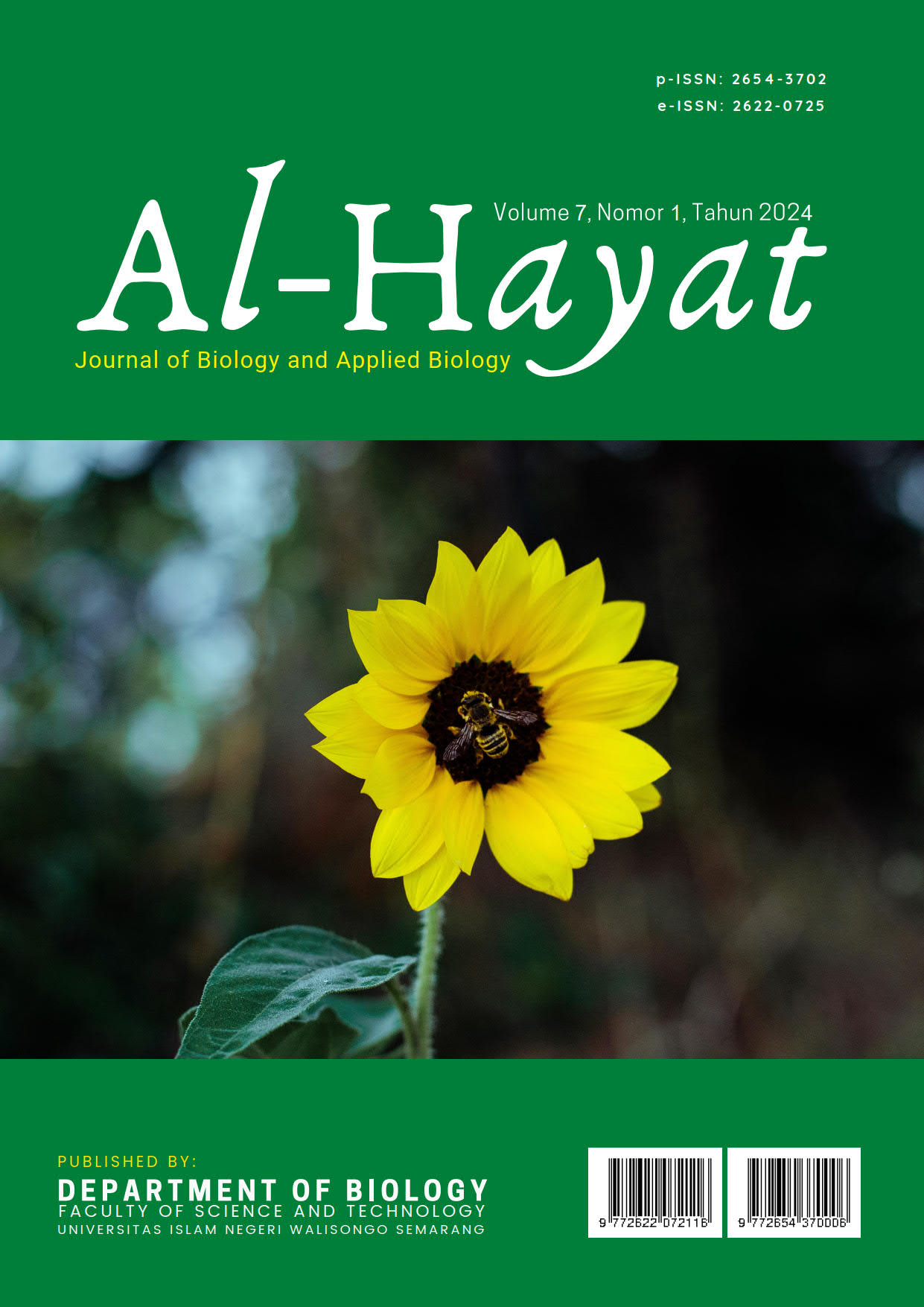Antioxidant Activity Of The Peel Citrus sinensis. L On The Histological Features Of Second Degree Burned Mus musculus
Main Article Content
Abstract
Burns are damage to the tissue that does not only occur on the surface of the skin, but can occur under the skin. Globally, burns are the fourth most common type of injury, after traffic accidents, falls and physical abuse. The cost of treating burns is relatively expensive according to the area of the burn, the larger the area of the burn, the higher the cost of treatment. Research for the treatment of burns using herbal ingredients has begun to be carried out by many researchers. One of the typical Indonesian herbal plant ingredients is the Pacitan orange (Citrus sinensis) L Osbeck. This type of research is an experimental research with the aim of looking at the formation of epithelial cells, fibroblasts, and collagen which are formed after being given Pacitan orange peel extract (Citrus sinensis) treatment. The sample of this study used 20 white rats which were divided into 4 groups, namely Group 1 (K1) the burn group without treatment, Group 2 (K2) the burn rats with bioplacenton treatment, Group 3 (K3) the burn rats with NaCl treatment 0.9%, Group 4 (K4) burnt rats treated with extra 100% Pacitan orange peel. From the research results obtained, it can be concluded that the administration of Pacitan Orange Peel extract is proven to accelerate the healing process of second degree burns on the skin of white rats viewed microscopically, namely from increased collagen production, epithelial thickness, and fibroblasts.
Keywords: Pacitan orange peel extract, Burns, Mus musculus, histopathology
Downloads
Article Details
The copyright of the received article shall be assigned to the journal as the publisher of the journal. The intended copyright includes the right to publish the article in various forms (including reprints). The journal maintains the publishing rights to the published articles. Authors are allowed to use their articles for any legal purposes deemed necessary without written permission from the journal with an acknowledgment of initial publication to this journal.
The work under license Creative Commons Attribution-ShareAlike 4.0 International License.
References
Aini N Annisa. (2020). EFEKTIVITAS MEMBRAN EDAMAME MENINGKATKAN KETEBALAN EPITEL PADA PENYEMBUHAN LUKA BAKAR DERAJAT IIB.
Darwin, O. C. (2016). Gambaran Sel Darah Putih Pada Respon Inflamasi Pasca Pemasangan Implan yang Dilapisi Platelet Rich Plasma dan Tanpa Dilapisi Platelet Rich Plasma.
Evers, L. H., Bhavsar, D., & Mailänder, P. (2010). The biology of burn injury. Experimental Dermatology, 19(9), 777–783. https://doi.org/10.1111/j.1600-0625.2010.01105.x
Franck, C. L., Senegaglia, A. C., Leite, L. M. B., De Moura, S. A. B., Francisco, N. F., & Ribas Filho, J. M. (2019). Influence of Adipose Tissue-Derived Stem Cells on the Burn Wound Healing Process. Stem Cells International, 2019. https://doi.org/10.1155/2019/2340725
Gunawan, S. A., Berata, I. K., & Wirata, I. W. (2019). Histopatologi Kulit pada Kesembuhan Luka Insisi Tikus Putih Pasca Pemberian Extracellular Matrix ( ECM ) yang Berasal dari Vesica Urinaria Babi. Indonesia Medicus Veterinus, 8(3), 313–324. https://doi.org/10.19087/imv.2019.8.3.313
Gunawan, S. A., Ketut Berata, I., Wirata, W., Sarjana, M. P., Hewan, K., Veteriner, L. P., & Veteriner, L. B. (2019). Histopatologi Kulit pada Kesembuhan Luka Insisi Tikus Putih Pasca Pemberian Extracellular Matrix (ECM) yang Berasal dari Vesica Urinaria Babi (HISTOPATOLOGY OF SKIN IN RECOVERY INCISION WOUND IN RAT POST GIVING EXTRACELLULAR MATRIX (ECM) FROM PORK’S VESICA URINARIA). Indonesia Medicus Veterinus Mei, 8(3), 2477–6637. https://doi.org/10.19087/imv.2019.8.3.313
Guyton, A. C., & Hall, J. E. (2011). Textbook of Medical Physiology (12th ed.). Elsevier.
Kalaszczynska, I., & Ferdyn, K. (2015). Wharton’s jelly derived mesenchymal stem cells: Future of regenerative medicine? Recent findings and clinical significance. BioMed Research International, 2015.https://doi.org/10.1155/2015/430847
Khristian, E., & Inderiati, D. (2017). SITOHISTOTEKNOLOGI.
Kumar, Abbas, & Aster. (2017). Robbins Basic Pathology (Elsevier).
Markiewicz-Gospodarek, A., Kozioł, M., Tobiasz, M., Baj, J., Radzikowska-Büchner, E., & Przekora, A. (2022). Burn Wound Healing: Clinical Complications, Medical Care, Treatment, and Dressing Types: The Current State of Knowledge for Clinical Practice. International Journal of Environmental Research and Public Health, 19(3). https://doi.org/10.3390/ijerph19031338
Sarbazi E, Yousefi M, Khami B, Ettekal-Nafs R, Babazadeh T, & Gaffari-fam S. (2019). EPIDEMIOLOGY AND THE SURVIVAL RATE OF BURN-RELATED INJURIES IN IRAN: A REGISTRY-BASED STUDY ÉPIDÉMIOLOGIE ET SURVIE APRÈS BRÛLURE EN IRAN: UNE ÉTUDE RÉTROSPECTIVE. In Annals of Burns and Fire Disasters.
WHO. (2014). World Health Statistics 2014. WHO. https://hsgm.saglik.gov.tr/depo/birimler/saglikli-beslenme-hareketli-hayat-db/Yayinlar/kitaplar/diger-kitaplar/TBSA-Beslenme-Yayini.pdf
Zhang, K., Lui, V. C. H., Chen, Y., Lok, C. N., & Wong, K. K. Y. (2020). Delayed application of silver nanoparticles reveals the role of early inflammation in burn wound healing. Scientific Reports, 10(1), 1–12. https://doi.org/10.1038/s41598-020-63464-z

